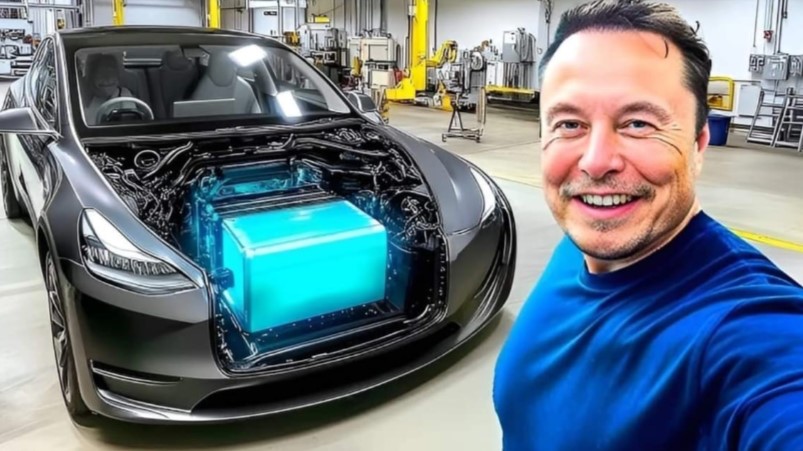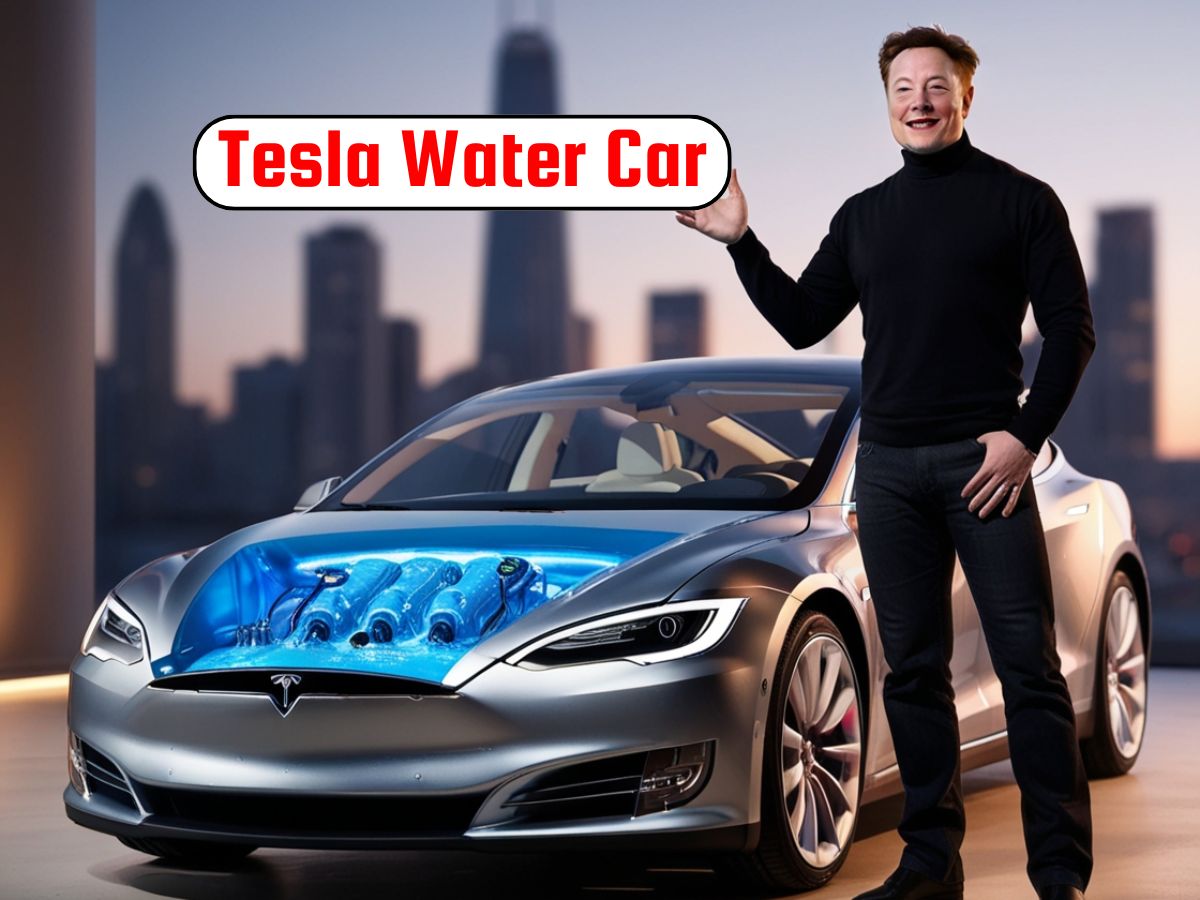Tesla Water Car: Tesla, a pioneer in electric vehicle technology, has consistently pushed the boundaries of innovation with its electric cars and clean energy solutions. Recently, rumors and speculations have sparked conversations about a “Tesla Water Car” – a futuristic concept vehicle powered by water.

While Tesla has yet to release official information on a water-powered car, the idea of such a sustainable vehicle aligns with the company’s commitment to environmental innovation. In this article, we’ll explore the concept of a Tesla Water Car, discussing its potential features, performance, and impact on the future of green transportation.

Tesla Water Car Concept Overview
The idea of a Tesla Water Car combines the benefits of clean energy with cutting-edge technology. While water-powered engines have been in experimental stages for some time, a fully water-fueled car has yet to be mass-produced due to technological and practical challenges. If Tesla were to develop a water car, it would likely be based on advanced technologies like hydrogen fuel cells or electrolysis to generate electricity from water molecules.

Hypothetical Specifications of a Tesla Water Car
Here is a speculative table of what the specifications of a Tesla Water Car might look like based on current advancements in clean energy and water-based fuel technology:
Specification Details
| Specification | Details |
|---|---|
| Fuel Type | Water-based fuel or hydrogen fuel cells |
| Engine Type | Hydrogen fuel cell / water-to-energy converter |
| Max Power Output | 200 kW (approximate) |
| Torque | 400 Nm (speculative) |
| Transmission | Single-speed automatic |
| Battery Capacity | 100 kWh (for stored electric backup) |
| Range per Refill | 500-600 km |
| Top Speed | 200 km/h |
| Charging Time | 5-10 minutes (hypothetical hydrogen refueling) |
| Environmental Impact | Zero emissions; by-product: pure water |
| Seats | 5 (standard) |
| Weight | 2,000 kg (estimated) |
| Price Range | $80,000 – $120,000 (if mass-produced) |
These speculative specifications illustrate the possibilities if Tesla were to develop a water-fueled car. The car might be powered by a hydrogen fuel cell or an advanced electrolysis system capable of converting water into electricity for propulsion.
How a Tesla Water Car Might Work
If Tesla were to create a water-powered car, it would likely use one of two methods:
Hydrogen Fuel Cell Technology: In this method, water (H₂O) would be split into hydrogen and oxygen. The hydrogen would then be converted into electricity through a fuel cell, which powers the electric motors to move the car. This process emits only water vapor as a byproduct, making it eco-friendly.
Direct Water-to-Energy Conversion: Another theoretical approach would involve an on-board system that continuously extracts hydrogen from water and uses it in real-time to generate energy. While promising, this technology faces challenges related to energy efficiency and scalability.
Tesla could potentially combine its existing battery technology with a water-based fuel system, using a small lithium-ion battery as a backup power source for extra range and stability.
Potential Features of the Tesla Water Car
If Tesla were to launch a water-powered car, it would likely incorporate some of the following innovative features:
Eco-Friendly Technology: A Tesla Water Car would emit zero emissions, with only water vapor as a by-product, contributing to cleaner air and a greener planet.
Enhanced Safety Features: Tesla has a reputation for advanced safety technology. A water-powered Tesla could feature state-of-the-art driver assistance and safety systems, including Tesla Autopilot, full self-driving capability, and collision prevention.
AI and Smart Features: Similar to other Tesla models, the water car would likely include advanced AI capabilities, allowing it to learn from the driver’s habits and provide real-time route optimization for fuel efficiency.
Regenerative Braking: By utilizing regenerative braking, the car could capture and store energy when braking, extending its range and improving overall energy efficiency.
Minimal Refueling Time: If equipped with a hydrogen fuel cell system, refueling the Tesla Water Car could take as little as 5-10 minutes, making it convenient for long-distance travel.
Price and Market Potential
The Tesla Water Car would likely be a high-end model, with an estimated price range of $80,000 to $120,000 if mass-produced. While the initial price may seem steep, the unique benefits of a water-powered vehicle could make it attractive to environmentally-conscious buyers.
The Tesla Water Car could mark a revolutionary step in sustainable transportation. It would target a niche market interested in futuristic, eco-friendly vehicles and could gain substantial traction if governments and environmental organizations endorse the technology.
Prospective Mileage and Performance
In terms of range and fuel efficiency, a Tesla Water Car could offer significant mileage per refill. With a fuel system based on hydrogen, the vehicle might achieve a range of 500-600 km per tank, competing with current electric vehicles and some gasoline cars. Additionally, the performance specs could allow for a top speed of 200 km/h and smooth acceleration, similar to Tesla’s existing electric lineup.
Conclusion
While a Tesla Water Car remains speculative, it represents the exciting potential of sustainable transportation. If Tesla were to develop this concept, it could set new standards for eco-friendly vehicles, providing a zero-emissions alternative with similar range and convenience as traditional cars.
The Tesla Water Car could lead a wave of sustainable technology, transforming how we view personal transportation and the impact it has on the environment.
